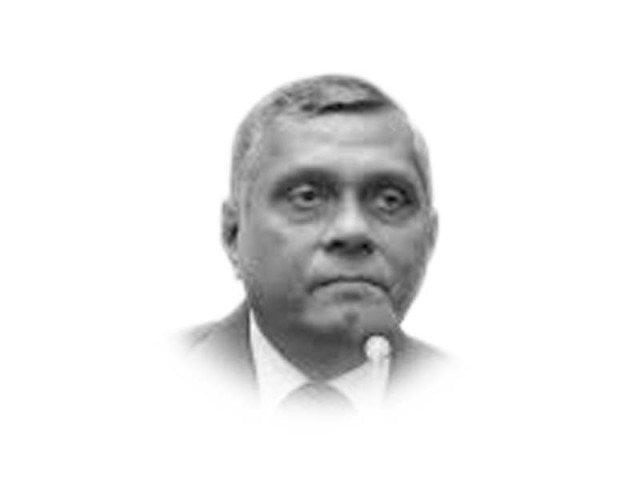In 1947, George F Kennan, a former US diplomat, articulated the idea of ‘containment’, which meant that the US foreign policy should focus on long-term but firm and vigilant containment of Russian expansionist tendencies. In March 1947, US President Harry Truman formalised the policy of containment in the US Congress, which led to the formation of the North Atlantic Treaty Organization (NATO) in April 1949. This was followed by the introduction of the South East Asian Treaty Organization (SEATO) in 1954 and the Baghdad pact (renamed CENTO) in 1955 under the dual containment policy against the communist USSR and China.
Political alliances, military bases and supply of armaments to allies in Asia and Europe were essential components of the policy of containment. The US policy did not change even after the Cold War ended, and the USSR and Warsaw Pact dissolved. NATO continues to act as a pillar of the Atlantic alliance to deal with terrorism and the gradual surge of the Russian Federation. However, the containment of China is a recent phenomenon when Beijing while focusing on its soft power strategy to deepen influence in world politics began to enhance its military expenditures and challenge US naval-military presence in South China and elsewhere.
The US policy of containment is reactive to powers termed hostile by Washington. Presently, the dual containment policy centres on China and Russia. The two countries are perceived as a major threat to Western and US interests. The more Washington is pressing for dual containment, the deeper the Sino-Russian nexus is getting.
In March, Chinese President Xi Jinping met his Russian counterpart Vladimir Putin in Moscow and discussed the Ukraine conflict. Ukrainian foreign ministry spokesman Oleg Nikolenko made it clear that they expected “Beijing to use its influence on Moscow to make it put an end to the aggressive war against Ukraine”. During the meeting, President Putin reiterated that he is open to negotiations. “We will certainly discuss all these issues, including your initiative which we treat with respect, of course.” A joint statement issued after the Xi-Putin summit called on the US to stop “undermining global strategic security” and to cease developing a global missile defense system.
Currently, the US dual containment policy is composed of two facets.
First, the US and Western edge over the global order is at stake because of the rising Sino-Russian influence. It was easy for the US to deal with the Soviet threat as long as there was a Sino-Soviet rivalry because the US could suppress Russian influence in Europe, Asia and Africa. But the rise of China and its emergence as the world’s second economic power with defence expenditures of $230 billion has alarmed the US and the West. Beijing’s Belt and Road Initiative (BRI) and its ‘string of pearl strategy’ in the South China Sea means there is another power, which has emerged in the last two decades effectively challenging Western influence. Unlike Russia which has a history of expansionism and armed conflicts with neighbours, including Ukraine, China has shrewdly penetrated its influence worldwide through its trade, aid, investments and diplomacy. For the US and the West, China is more dangerous than Russia because it has not only resources but also the military capability to undo the US-led global order. In this scenario, the stakes for the US are quite high to contain both China and Russia. Here the fundamental question is about the capability of the US and its Western allies to effectively neutralise Sino-Russian threats to their interests.
Second, to galvanise its dual containment policy, the US has followed a two-pronged strategy: NATO in Europe and QUAD (Quadrilateral Security Dialogue) composed of Australia, India, Japan and the US in the Indo-Pacific. Both are meant to contain Russia and China. The implications of this two-pronged strategy are not difficult to gauge. It will further polarise the world order and unleash a new cold war jeopardising efforts to deal with deadly environmental threats and the growing food and energy crisis in the world.
Critics of the dual containment policy argue that to sort out its scores with Russia, Washington is not hesitant in jeopardising the economic interests of its NATO allies by urging them not to buy cheap gas from Russia. Cuts in Russian gas supply via Nord Stream 1 are already harming European beneficiaries and their interests. But the US does not care about the costs of confrontation, which its European allies are paying over the war in Ukraine.
Some NATO allies of the US may be mindful of the fact that the growing confrontation with Russia over Ukraine is draining their resources and plunging the world into another cycle of armed conflicts. A recent editorial in The Economist said, “Europe is witnessing its bloodiest cross-border war since 1945, but Asia risks something even worse: conflict between America and China over Taiwan. Tensions are high, as American forces pivot to a new doctrine known as ‘disturbed lethality’ designed to blunt Chinese missile attacks. As America rearms in Asia and tries to galvanize its allies, two questions loom: Is it willing to risk a direct war with another nuclear power to defend Taiwan? And by competing with China militarily in Asia, could it provoke the very war it is trying to prevent?”
During the recent summit, China and Russia would have discussed the US containment policy and ways to pre-empt Washington’s plans to sink Moscow deeper into the Ukraine quagmire and provoke China over Taiwan. Both Russia and China are aware of US designs and would want to make sure that a rift emerges in NATO and QUAD over Ukraine and China as it can potentially derail the so-called policy of dual containment.
The history of the US policy of containment shows that it is reactive rather than proactive. Whether it was the policy of containing the communist USSR, communist China, Cuba, North Korea, or Iran it only polarised the world and augmented the arms race.





